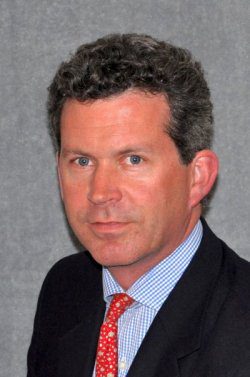Change Leader: Insurance and Risk Management Is Crucial for Construction

Change
Generali has been a corporation for more than 180 years, with a heavy concentration in Europe, providing construction insurance for some of the largest projects in the world. Sims and Mason are putting their years of experience into helping Generali GC&C grow its presence in the U.S. market.
“Within GC&C, we have nine hub offices, all of which provide a variety of different construction insurance projects,” explains Sims. “Rather than each office operating in isolation, we have a practice leader and a vigorous construction community within which we share best practices, successes, underwriting approaches, underwriting tools, wording enhancements, etc., while we operate within our individual territories, and following our customers overseas as and when appropriate. We are very much an integrated underwriting team.”
Growing Concern for Risk
Informed Infrastructure recently completed an industry survey of engineers and those within the construction industry (read the highlights starting on page 46), and risk assessment was one of the top concerns. The risk environment is constantly changing and evolving as projects are getting larger and more complicated, and construction techniques are changing. Therefore, owners want to make sure they have appropriate coverage, and underwriters want to make sure they’ve analyzed and assessed risks appropriately.
One product Generali GC&C offers to alleviate risk at construction sites is its Builder’s Risk Solution, which includes features important to contractors such as delay and completion, coverage, and various limits on a contractor’s expense. But every project is different, so each policy is built on its own basis, and they’re completely customizable.
“Within certain best-practice parameters, it’s not a ‘one size fits all’ solution,” adds Sims. “It is a collaborative exercise among the buyer, broker and underwriters to make sure the coverage arranged is most appropriate given the specific project details.”
Much at Stake
According to Generali, construction starts are expected to reach $712.9 billion in 2017, up 5 percent from 2016—a substantial market by any measure. Risks are evaluated for each project, and certain projects are inherently more risky than others. Simple residential buildings are less risky than complicated bridges or tunnels, but there are many reasons developers may need more or less insurance coverage.
“Projects that include a revenue feature—like toll roads, metro lines and airports—have an added risk of business interruption in the event of a claim during the construction phase,” notes Mason.
Lowering Risk to Avoid Claims
Another major function of construction underwriters is to provide advice or best practices that can lower risk, rather than just increasing insurance costs for more-dangerous endeavors. Although most of Generali’s clients are experienced contractors performing large projects, and most of the risk evaluation happens before building, evaluators and risk engineers can visit an active project site as often as every quarter, depending on the complexity.
“The inception of a policy is the easy part,” adds Mason. “The work begins after that, when we visit the site periodically with a risk engineer to assess the ongoing risk at crucial points in the project where there’s a particularly tricky part of construction. We would very much like to be there to offer our experience and insight.”



